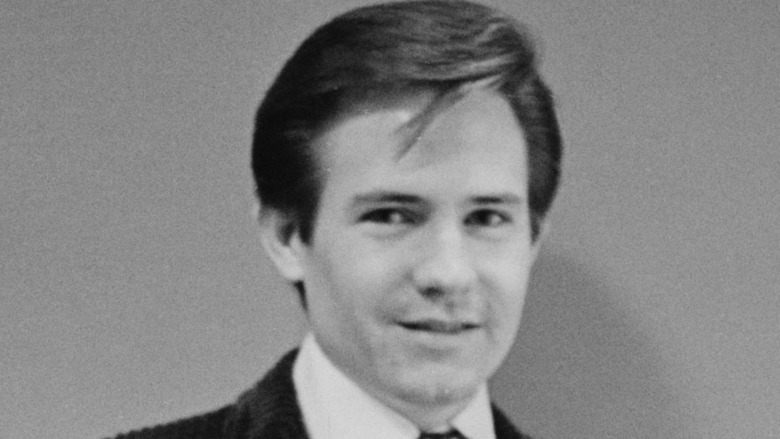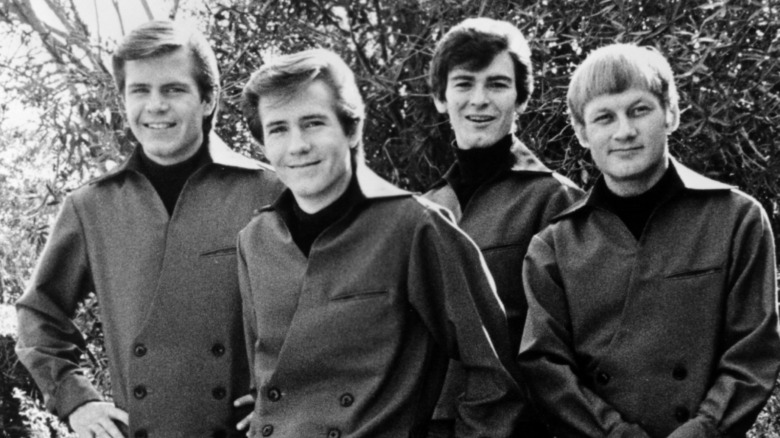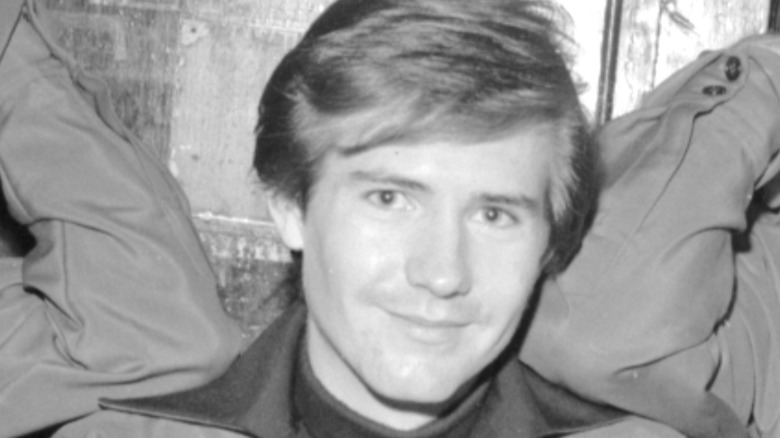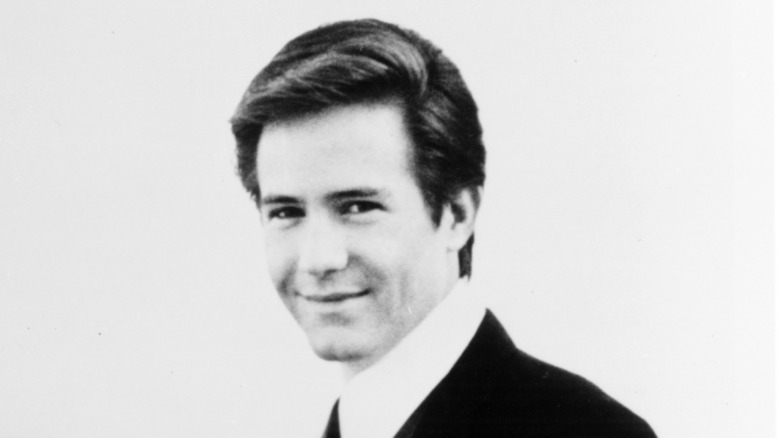The Mysterious Death Of Bobby Fuller
The Bobby Fuller Four were mostly known for one song, but what a song it was. Their version of the Crickets' "I Fought the Law" spawned a slew of covers in the decades that followed (via Second Hand Songs), including versions from punk legends The Clash and Dead Kennedys — the latter a rewritten version with much angrier, sarcastic lyrics. But that's not the only song of theirs that continues to resonate with listeners to this day — for example, their 1965 single, "Let Her Dance," was used during the end credits of Wes Anderson's 2009 film Fantastic Mr. Fox. Furthermore, they stood out for staying true to their American rock 'n' roll influences from the '50s, unlike other young bands from the mid-'60s whose love for the Beatles and other British acts showed in their music.
It can also be said that Bobby Fuller could have achieved much more success if not for his death at the tender age of 23. On July 18, 1966, the musician's lifeless body was found in his mother's car, and while his death was originally believed to be a suicide, many soon speculated that he might have been murdered.
Fifty-five years later, Fuller's death remains one of the biggest unsolved mysteries in classic rock history. Here's the story of his untimely death, and a look at some of the theories on the circumstances behind his passing.
Before his death: The Bobby Fuller Four was unhappy with their manager
A local hero in his hometown of El Paso, Texas, Bobby Fuller and the rest of his eponymous band moved to California in 1964, where they were signed by Del-Fi Records owner Bob Keane, who also became their manager and producer — among other roles. As documented by The Guardian, it wasn't long before the Bobby Fuller Four established themselves as a "formidable live group."
By 1966, "I Fought the Law" became a Billboard top 10 hit, but friction was building between Keane and his charges. While Fuller and his bandmates wanted to keep things simple on stage and in the studio, Keane cooked up a series of cheesy gimmicks for the band, including a cameo in a beach party B-movie, a debut LP based exclusively on the drag racing trend of the era, and a single under the pseudonym "The Shindigs" — the latter a blatant attempt to get on the popular television show Shindig!
Not long before Fuller was found dead, Keane worked out an exclusive distribution deal with Roulette Records, a label owned by the controversial Morris Levy — the so-called "Godfather of the American music business." As part of that deal, the Bobby Fuller Four was to release "The Magic Touch," a soul-influenced single written by a Roulette-affiliated songwriter and an attempt on Keane's part to capitalize on the popularity of the Motown scene.
Fuller's death was initially ruled a suicide despite conflicting evidence
On the morning of July 18, 1966, Bobby Fuller drove off from his Hollywood apartment in his mother's Oldsmobile after receiving a call from someone, as noted by Ultimate Classic Rock. That afternoon, he was found dead in the front seat of the car, which was parked in a lot outside his apartment. He was reportedly spotted "with a plastic hose in his hands leading to a gasoline can," per the Los Angeles Times (via The Guardian). That led authorities to conclude in a rather cut-and-dry manner that Fuller died by suicide — they didn't even bother to interview anyone close to the singer/guitarist or take fingerprints before closing the case.
There were, however, some signs that suggested Fuller might not have taken his own life. Mainly, his body was already in an advanced state of rigor mortis despite the fact that his mother's car had only been in the parking lot for 30 minutes before she found it, hinting he might have been dead for quite a while before his body was found. There were also bruises on his arms and body, which suggested that he might have been beaten or dragged.
None of those things were taken into account during Fuller's autopsy, as the report mentioned that the "hemorrhages" on his body were likely the result of gas vapors and the hot summer weather.
If you or anyone you know is having suicidal thoughts, please call the National Suicide Prevention Lifeline at 1-800-273-TALK (8255).
Various theories regarding Bobby Fuller's death
Although Bobby Fuller's official cause of death was updated to "accidental asphyxiation" in October 1966, per Ultimate Classic Rock, there were a lot of details regarding his passing that still didn't make sense to people. If he did indeed die well before his body was found, where did he die, and who drove his mother's car back to the parking lot? Were there people who wanted Fuller dead, or was his passing a case of death by misadventure?
According to the publication, there have been several unsubstantiated theories about Fuller's death, including one suggesting that manager Bob Keane might have killed him in order to cash in on a substantial insurance policy; The Guardian also notes that Keane managed two other prominent musicians who died in "disputed" circumstances — Ritchie Valens and Sam Cooke. Others have suggested that Fuller died from an allergic reaction to some LSD he ingested at a party, or that someone might have killed him for having an affair with a "mob-connected" Los Angeles nightclub owner's girlfriend. There have also been theories linking Charles Manson to the musician's mysterious death.
One other individual was singled out a few years ago as the most likely person responsible for Fuller's death — Roulette Records' Morris Levy. In their 2015 book I Fought The Law: The Life and Strange Death of Bobby Fuller, authors Miriam Linna and Randy Fuller (Bobby's brother and bandmate) attempted to link Levy — a man with alleged Mafia ties and a penchant for violence — to Bobby's death, suggesting that he might have been killed because he wanted out of a business deal he previously made with the label owner.



